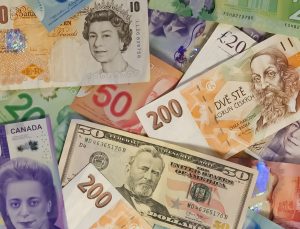In the world of forex trading, gaps are an important concept that every trader should understand. A gap is a term used to describe the space between the closing price of a currency pair and the opening price of the same pair in the next trading session. Gaps can occur in any financial market, but they are particularly common in forex trading due to the 24-hour nature of the market. So, what does a gap mean in forex? Let’s explore.
Firstly, it’s important to note that gaps can occur in two different directions: upward or downward. An upward gap occurs when the opening price of a currency pair is higher than the previous day’s closing price, while a downward gap occurs when the opening price is lower than the previous day’s closing price.
The reason gaps occur is due to unforeseen events that happen outside of trading hours. These events can include economic data releases, geopolitical events, or unexpected news that can impact the forex market. For example, if a country’s central bank announces a change in interest rates after the market closes, this can cause a gap in the market when trading resumes.
Gaps can have a significant impact on forex traders, as they can provide valuable information about market sentiment and potential trends. When a gap occurs, it usually indicates a significant shift in market sentiment. For example, an upward gap may indicate that buyers are more bullish on a particular currency pair, while a downward gap may indicate that sellers are more bearish.
Traders can use gaps as a potential trading opportunity. For example, if a currency pair experiences a downward gap, a trader may consider shorting the pair based on the assumption that the market sentiment has shifted to bearish. Conversely, if a currency pair experiences an upward gap, a trader may consider going long on the pair based on the assumption that the market sentiment has shifted to bullish.
However, it’s important to note that gaps can also be a result of market inefficiencies, which can lead to increased volatility and potentially larger losses for traders. In some cases, gaps can occur due to low liquidity, which can cause price discrepancies and make it difficult for traders to execute trades at their desired price.
To mitigate the risks associated with gaps, traders should always use proper risk management techniques, such as setting stop-loss orders and avoiding trading during periods of low liquidity. Additionally, traders should always keep an eye on economic data releases and other events that can impact the forex market.
In conclusion, gaps are an important concept in forex trading that every trader should understand. Gaps can provide valuable information about market sentiment and potential trends, but they can also be a source of increased volatility and larger losses. By using proper risk management techniques and staying informed about market events, traders can effectively navigate gaps in the forex market and potentially profit from them.





